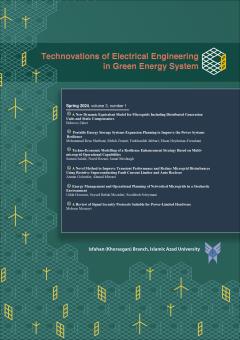-
-
List of Articles
-
Open Access Article
1 - A Single-Switch DC-DC High Step-Up Converter with Soft Switching for Photovoltaic Applications
Tayebeh Shamsi Majid Delshad Ehsan Adib Mohammad Rouhollah Yazdani -
Open Access Article
2 - Short-Term Forecasting of Wind Farm Power Production Using a Modified Artificial Neural Networks Based Algorithm in Python: A Case Study in Manjil
Hamid Jabari Ardalan Shafiei-Ghazani Farkhondeh Jabari -
Open Access Article
3 - Parameters Estimation of Photovoltaic Cell Using Cuckoo Search Algorithm
Vahdat Nazerian Mehran Hosseinzadeh Dizaj Alireza Salehi -
Open Access Article
4 - Reliability Investigation with the New Architecture of the Backup Node Markov Model with a Better Repair and Replacement Rate and More Monitoring in Avoiding the Failure of Industrial Wireless Sensor Networks
Ahmadreza Zamani Mohammad Ali Pourmina Ramin Shaghaghi Kandovan -
Open Access Article
5 - Design and Simulation of Low Power Adder Circuits Using MGDI Gate in QCA Technology
Hamidreza Sadrarhami Sayed Mohammadali Zanjani Mehdi Dolatshahi Behrang Barekatain -
Open Access Article
6 - A New Ultra High-Gain DC/DC Converter with Full Soft-Switching Performance and Low Voltage Stress
Sara Hasanpour Amard Afzalian Tohid Nouri
-
The rights to this website are owned by the Raimag Press Management System.
Copyright © 2021-2025







